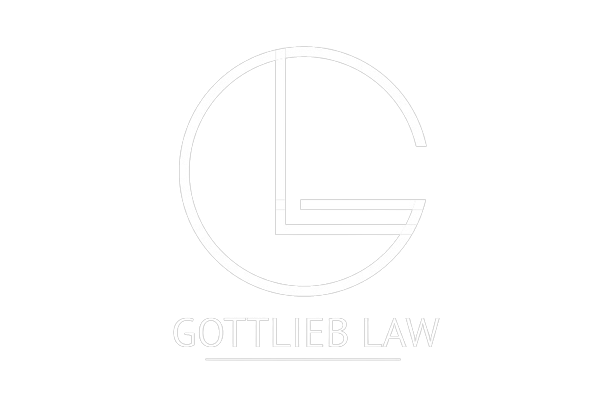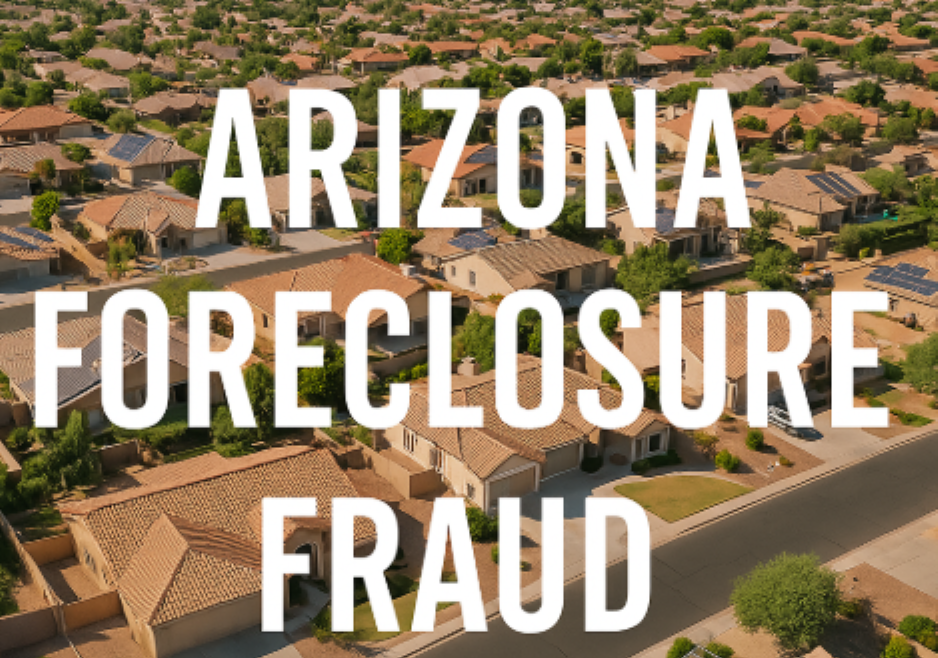This article is intended to educate—not alarm. If you’re unsure whether a past transaction is valid, now is the time to review it with legal counsel. Gottlieb Law, PLC provides this article for information purposes only and nothing herein creates an attorney-client relationship. You should not take any actions in reliance on any of the information contained herein without consulting with qualified legal counsel first and reading this article is not a proper substitute for seeking legal advice of your specific situation. Laws change over time and you should seek counsel to discuss any specific legal questions.
Arizona’s Attorney General just filed a landmark civil suit in State of Arizona v. Cameron Jones et al. The case targets a sophisticated network accused of stealing millions of dollars in home equity from Arizona homeowners facing foreclosure. The alleged fraud began as unsolicited offers of foreclosure relief and grew into an organized scheme of deceptive contracts and rapid property flips. Arizona homeowners and families lost their hard-earned equity in their most valuable asset while shell companies profited off those quick flips of the property.
This lawsuit matters to every corner of Arizona’s real estate market. Homeowners need to recognize warning signs of real estate fraud and protect their rights. Title companies, lenders, and brokers could face serious liability if they overlook suspicious transactions. Investors must sharpen due diligence to avoid unknowingly participating in fraudulent deals. To help make sense of the news and potential ramifications for everyone impacted, let’s dive into why every homeowner and real estate professional in Arizona needs to pay attention to how this case unfolds.
Arizona Foreclosure Rescue Scam Lawsuit: State of Arizona v. Cameron Jones
In March of 2025, Arizona Attorney General Kris Mayes filed a civil complaint in Maricopa County Superior Court (Case No. CV2025‑008402) against more than 40 affiliated individuals and entities for orchestrating an “equity‑stripping” scheme targeting homeowners in pre‑foreclosure. According to the State’s complaint, the defendants identified distressed homeowners by monitoring public Notice of Trustee’s Sale filings and immediately dispatched agents to offer “foreclosure relief” that was actually a high‑pressure pitch to transfer property title for grossly inadequate consideration.
Under the Arizona Consumer Fraud Act (A.R.S. § 44‑1522(A)), it is unlawful to employ “deception, false promise, misrepresentation or concealment” in connection with the sale of real property. The complaint cites numerous cases where defendants falsely labeled contracts as leaseback or charitable “rescue agreements,” pressuring homeowners to surrender their equity for only 20% to 30% of the home’s fair market value.
Beyond consumer fraud, Arizona’s Racketeering Act (A.R.S. §§ 13‑2301–2315) provides civil remedies for a “pattern of racketeering activity,” defined as two or more predicate offenses (including theft by deception) within a five‑year span. The AG’s suit seeks to treat the network of shell limited liability companies, such as A‑Z Homes LLC, Invest in AZ LLC, and dozens of address‑named entities, as a single enterprise designed to conceal illicit gains through rapid property flips and false filings (including fraudulent bankruptcy petitions) to stall foreclosure auctions.
The State seeks injunctive relief dissolving each fraudulent entity, full restitution to defrauded homeowners, disgorgement of ill‑gotten profits (tripled under A.R.S. § 13‑2314.04), and civil penalties totaling $10,000 per violation. By combining Arizona’s consumer fraud and racketeering statutes, the AG’s complaint establishes a powerful legal framework for dismantling the scheme and recovering any stolen equity for Arizona families.
Arizona Equity‑Stripping Scam Warning Signs for Homeowners
The allegations in this case reveal a sophisticated scheme that robs homeowners of their hard-earned equity just as foreclosure looms. Recognizing the warning signs is crucial to ensuring you don’t fall prey to such deceptive tactics when dealing with foreclosure or selling your property.
1. Unsolicited “Foreclosure Relief” Visits or Calls
Legitimate foreclosure assistance comes from your lender, a HUD-approved counselor, or a licensed attorney. Scammers can show up unannounced at your door or call claiming to offer immediate help with your mortgage, invoking urgency by saying the foreclosure sale is “imminent” to pressure you into making quick decisions.
2. Contracts Disguised as “Leaseback” or “Rescue Agreements”
Read every document closely. Equity‑stripping schemes typically use contracts that appear to be short‑term rental or loan agreements but secretly transfer title or grant excessive control over your property. If a contract requires you to sign away ownership rights in exchange for vague promises of “future purchase” or “charitable assistance,” treat it as a major red flag.
3. High‑Pressure Signing Without Legal Review
Arizona law (A.R.S. § 44‑1522) prohibits deceptive practices in real estate transactions. Fraudsters exploit homeowners’ fear by demanding signatures on the spot, often late at night or immediately after a foreclosure notice appears online. Never sign any real estate document without taking the time to review it with a trusted attorney.
4. Sale Prices Far Below Market Value
If someone offers to buy your home for substantially less than comparable market values, especially when your mortgage balance is lower, pause immediately. Legitimate investors still need to clear your loan balance and closing costs. An offer that leaves you with little to no proceeds likely conceals hidden fees or fraudulent terms.
5. Promises to Cancel or Delay Foreclosure for a Fee
Beware of anyone who claims they can stop a foreclosure sale for an upfront payment. While filing false bankruptcy petitions or probate cases to stall trustee sales is not specifically mentioned in the Arizona Revised Statutes, they provide a framework for defining and penalizing racketeering activities, including a range of fraudulent or deceptive practices. For example, the statute defines “racketeering activity” as including certain predicate offenses such as theft, fraud, forgery, and other acts of deception committed as part of an enterprise over a period of time.
These types of real estate scams can fall under predicate offenses like fraud or theft by deception if it is shown to be part of a broader, organized effort to defraud creditors or homeowners. In other words, if these filings are used intentionally to delay foreclosure sales and facilitate the transfer of property under false pretenses, they could be prosecuted under the racketeering provisions as part of a pattern of illegal behavior. Keep in mind that courts have interpreted these provisions broadly to cover various forms of fraudulent schemes.
If you need a deeper legal analysis or guidance on how this applies to a specific situation, consult with an attorney experienced in Arizona real estate laws and fraud.
Your Rights Under Arizona Law
If you recently signed a suspicious agreement, you should immediately seek counsel to determine if you can cancel a foreclosure rescue agreement.
Immediate Steps if You’ve Been Targeted
- Preserve All Paperwork and Communications. Keep copies of contracts, business cards, and any recorded conversations.
- Contact an experienced Arizona real estate attorney. Have an experienced real estate attorney review your documents and advise you on rescission, restitution, or litigation options.
- File a Complaint with the Arizona Attorney General’s Consumer Fraud Division. Call 602-542‑5763 or submit online at azag.gov/report.
Time is of the essence if you believe you have been a victim of real estate fraud. If you suspect you’ve been targeted by a foreclosure rescue scam or equity‑stripping operation, review your case with an Arizona real estate attorney as soon as possible.
Arizona Foreclosure Fraud Lessons for Title Companies, Lenders & Real‑Estate Professionals
This suit shines a spotlight on critical compliance failures across the real‑estate industry. Title companies, mortgage lenders, brokers, and investors will likely need to sharpen due‑diligence practices now to potentially avoid the same racketeering liability and treble‑damages exposure faced by defendants in this high‑profile equity‑stripping case. Here are some important things for individuals and companies in the real estate industry to consider:
These simple, common-sense suggestions are not an exhaustive list of best practices, nor do they replace the need to review any specific case, transaction, or business practices with legal representation.
1. Flag Distressed‑Property Transactions Immediately
Monitor county recorder filings for Notices of Trustee’s Sale. Any off-market sale of a home in active foreclosure, especially to an LLC buyer at a price dramatically below Zillow estimates, should trigger a “red flag” review under Arizona’s Consumer Fraud Act. Maintain a log of flagged transactions and require enhanced scrutiny before moving forward on any flagged transactions.
2. Mandate Independent Seller Counsel
Arizona’s racketeering complaint alleges defendants used deceptive contracts to strip title. Protect all parties by insisting that sellers facing foreclosure secure independent legal representation before signing any sale or leaseback agreement. Document proof of counsel in transaction files to demonstrate good‑faith compliance.
3. Establish Formal Verification Protocols
Implement a written checklist that confirms:
- Buyer and seller identities via government‑issued ID verification
- Chain‑of‑title integrity (review all prior transfers for suspicious rapid flips)
- Fair market valuation analysis against county assessor data
- Verification that no foreclosure‑rescue or leaseback contract is disguised as a sale
Consider using advanced software solutions to automate alerts for transactions that meet distress criteria (e.g., purchase price < 70% of market value) to protect your business and provide the most value to clients/customers.
4. Train Staff on Foreclosure Rescue Scam Indicators
Provide quarterly training on common equity‑stripping tactics, including unsolicited “help” visits, misleading contract language, and rushed closings. Require staff to escalate any suspicious deal to your compliance or legal department for immediate review.
5. Document Every Step — And Every Decision
Arizona’s Racketeering Act allows civil suits against professionals who “knowingly facilitate” fraud. Maintain a detailed audit trail for every distressed‑property transaction, including emails, due‑diligence checklists, valuation reports, and signed attestations from seller counsel to document your internal procedures and protocols in case any legal issues arise.
Consequences and Next Steps for Industry Professionals
Title agencies, lenders, and real estate professionals must understand that non‑compliance carries severe risks. Firms implicated in the equity‑stripping lawsuit may face civil penalties of $10,000 per violation under Arizona’s Consumer Fraud Act and treble damages on all illicit profits. Such financial penalties can accumulate quickly, while reputational damage can endanger licenses and erode client trust.
The evolving legal landscape demands proactive measures. If your business deals with foreclosure properties, you need to act swiftly and decisively. Consider these additional steps to ensure compliance and protect your business:
- Conduct Comprehensive Compliance Audits: Engage experts to meticulously review your due diligence protocols for all foreclosure transactions. Ensure that your processes align with Arizona’s anti‑fraud statutes and that every step, from verifying seller identity to confirming market value, is thoroughly documented.
- Implement Rigorous Risk‑Management Counseling: Develop training programs that empower staff to spot red flags, such as transactions with unusually low purchase prices or rushed closings lacking independent legal review. Elevate internal standards by requiring formal verification and documentation for every deal.
- Establish Enhanced Verification Procedures: Adopt written protocols that demand independent seller representation before any transaction. Utilize automated systems to monitor distressed‑property filings and flag suspicious activity, ensuring that every case is reviewed by a compliance officer before proceeding.
Arizona Equity‑Stripping Case Lessons for Attorneys & Regulators
Every attorney, regulator, or policymaker reviewing the Arizona equity‑stripping lawsuit should see it as more than a single enforcement action, it is a blueprint for preventing and prosecuting sophisticated real‑estate fraud. The State’s use of both consumer‑fraud and racketeering statutes creates a roadmap of actionable lessons that can safeguard homeowners and strengthen legal compliance across the industry.
Lesson 1: Early Detection Saves Equity
The alleged acts behind State of Arizona v. Cameron Jones et al. started with the involved individuals/companies monitoring publicly filed notices of foreclosure sales and sent workers to these homes within hours of posting, obviously hoping to catch homeowners before they had time to investigate their options. This hyper‑speed approach shows that conventional reactive processes are not working well enough. To help with early detection, legal teams and government agencies should consider:
- Implementing automated alerts tied to county recorder data to flag filings immediately
- Creating centralized dashboards that aggregate foreclosure notices by address or owner
These proactive measures can intercept fraudulent outreach before a deed is signed away and preserve homeowner equity.
Lesson 2: Professional Facilitation Carries Severe Liability
Arizona’s Racketeering Act holds title agents, attorneys, and escrow companies accountable when they knowingly facilitate fraudulent transactions. The complaint specifically names law firms and title companies for notarizing and closing deals that blatantly violated statutory protections for distressed sellers. To limit exposure, legal and title professionals should consider the following actions:
- Institute a mandatory conflict‑check process for all transactions involving LLC buyers purchasing foreclosed property
- Require documented proof of independent seller counsel before any deed transfer
- Maintain a transaction file that includes a market‑value appraisal, identity verification, and a compliance attestation signed by a senior partner
Lesson 3: Enforcement Will Intensify—Nationwide Ripples Ahead
Arizona’s civil racketeering suit sets a precedent likely to inspire similar actions in other states. The AG’s strategy demonstrates that consumer‑fraud enforcement can target entire enterprises rather than isolated actors, increasing both financial risk and reputational damage for anyone involved in foreclosure‑related transactions. Attorneys and policymakers could consider the following improvements to existing legislation:
- Monitor emerging case law around equity‑stripping and foreclosure rescue scams, including developments in State of Arizona v. Cameron Jones et al.
- Update firm compliance manuals to include specific protocols for identifying and reporting foreclosure‑rescue red flags
- Advocate for statewide registries of foreclosure consultants and mandatory disclosures for distressed‑property transactions
As regulatory scrutiny escalates, staying ahead of enforcement trends isn’t optional, it’s essential to protect clients, preserve market integrity, and avoid costly litigation. Every lesson from Arizona’s landmark equity‑stripping case underscores the need for rigorous controls, rapid response capabilities, and unwavering commitment to ethical practice. Legal professionals who embed these insights into their standard operating procedures will not only shield their firms from liability but also play a pivotal role in preventing predatory schemes that devastate homeowners across the nation.
Why This Arizona Equity‑Stripping Lawsuit Matters to Your Business
Arizona’s unprecedented civil suit against Cameron Jones et al. is a seismic event for any organization involved in real‑estate transactions, lending, or investment. The lawsuit exposes how quickly a well‑organized fraud can infiltrate the market, undermine consumer trust, and inflict crippling financial and reputational damage on businesses that fail to detect or report suspicious activity, even if they did not knowingly participate in the fraud.
Lenders and Title Companies at Risk
Even businesses with established compliance programs can fall victim when fraudsters exploit loopholes in distressed‑property workflows. This case highlights critical vulnerabilities in many service providers, professionals and companies in the real estate industry. Beyond the extensive legal and financial penalties, forced dissolution of shell entities and receivership proceedings can freeze assets, derail transactions, and clog internal resources. Being named in a high‑profile foreclosure fraud suit will likely undermine client confidence and can trigger licensing investigations.
Arizona Foreclosure Fraud & Equity‑Stripping Legal Issues
This case underscores the urgent need for homeowners, title professionals, lenders, and investors to understand their rights and risks. From deceptive door‑to‑door offers to racketeering claims that can seek treble damages, this case illustrates how quickly predatory practices can strip away equity, damage reputations, and expose businesses to crippling liability. Whether you’ve already been targeted by a foreclosure fraud scam or you simply want to ensure your real‑estate transactions are bulletproof, Gottlieb Law stands ready with the experience and proven strategies you need.
If you need representation relating to an equity stipping situation, feel free to reach out to our qualified team at Gottlieb Law. Don’t wait until a fraudulent deed or enforcement action jeopardizes your equity, license, or bottom line. Schedule your consultation with Gottlieb Law today to assess your exposure, protect your assets, and build a compliance plan tailored to Arizona’s evolving enforcement landscape.
Call Gottlieb Law at 602-899-8188 or use our contact us page to schedule an initial consultation with our firm.
Gottlieb Law, PLC provides this article for information purposes only and nothing herein creates an attorney-client relationship. You should not take any actions in reliance on any of the information contained herein without consulting with qualified legal counsel first and reading this article is not a proper substitute for seeking legal advice of your specific situation. Laws change over time and you should seek counsel to discuss any specific legal questions.










